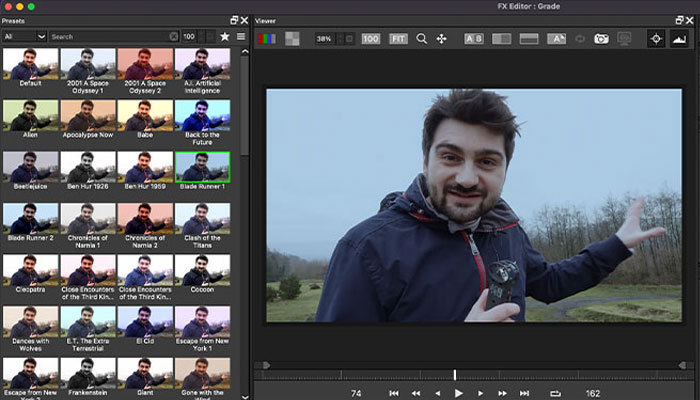Today, on Art of the Cut, we’re speaking with Anthony Greenberg, editor of Pixar’s latest animated feature, Lightyear. Anthony was nominated for an Oscar, and ACE Eddie and an Annie for his work on Incredibles 2.
Anthony’s other work includes The Good Dinosaur (second film editor), WALL-E (first assistant editor), and The Incredibles (second assistant editor). Before his career at Pixar, he worked at ILM on films like Men in Black II. Short on time? Read our 6-minute best of recap.
Art of the Cut with Anthony Greenberg the Editor of PIXARs Lightyear
HULLFISH: Animation editing is obviously a very different type of editing than live-action editing. What is the difference between the way a traditional live-action editor works and the way an animation editor works?
GREENBERG: Yeah, that's a great question to start off with. I feel like editing, in general, is just a misunderstood art a lot of times. It's really tough to explain to your Uncle George what it is you do. It's a lot easier to do things that people recognize. Whenever I tell someone I work at Pixar Animation Studios, they say, “Oh, you're an animator!” I'm like, “Eh, actually, I'm an editor.” It's weird because even people within our industry that work on films sometimes don't understand what an animation editor does. I don't know if that's because since the shots are computer-generated that they think they would be made to line up automatically (like in live-action editing).
I kid you not, the first movie I worked on at Pixar was The Incredibles, and there was someone who was trying to automate editorial. It was such a confusing thing for me to take such a human endeavor to edit and to try and figure out a way to automate it. Obviously, it didn't work. It’s a long way around getting into talking about what the difference is between a live-action editor and an animation. I think the big difference is, at least at Pixar, is the animation editor is involved very early on in the development stage from the storyboard and onward.
The actual movie that we make only takes about two years to make, but we're on these movies for up to five years sometimes because we're making multiple versions of the movie in a scratch format with storyboards. The big difference is a live-action editor selects the best shots from dailies or footage that may have been shot on location or shot on a sound stage somewhere with actors that are doing their own timing and cinematographers who are shooting it all. So you're picking the best takes out of timing that was created somewhere else and comes into your editing system.
Whereas the animation editor has to invent all of that from scratch. The only thing that we have that's remotely close to a live-action piece is the dialogue that we record in our dialogue sessions which we can manipulate a lot because there is no picture to rely on. Any given sentence in an animated film could be from multiple takes recorded over several months in different locations which we cut together.
A lot of people think in editing, you're cutting something out of something that prematurely exists. This isn’t right. The editor actually builds the movie from scratch with all the elements that they have.
I got mad amounts of respect for all my colleagues in live-action. I would love to do it someday. It sounds like a fascinating way to work. It’s just that what's happening up here in the Bay area is animation. The thing about live-action editors is they get all this footage and they have to make something with it. Sometimes they get to do some reshoots, but you gotta make the best of whatever you have right in front of you, which is amazing in and of itself.
The way we do it in animation typically is before we actually get to an audience preview and get involved in making the film in earnest, we've made the movie around seven times. Each time it's a dialogue, a process where we do have a script, it's a starting point. All of that gets divvied up into sequences. The storyboard artist draws it. It comes to my team and me. We time all the boards out with the dialogue, add temp sound effects from our library, and add temp score just to get it to play as well as we can in the time that we have for that screening. After we play it at the screening, we get a bunch of notes. We might rewrite stuff and move stuff around, but we're involved in that whole process, working with the writers and working with the Head of Story and the story artists. I feel like there's a lot more involvement just in the creation of the story.
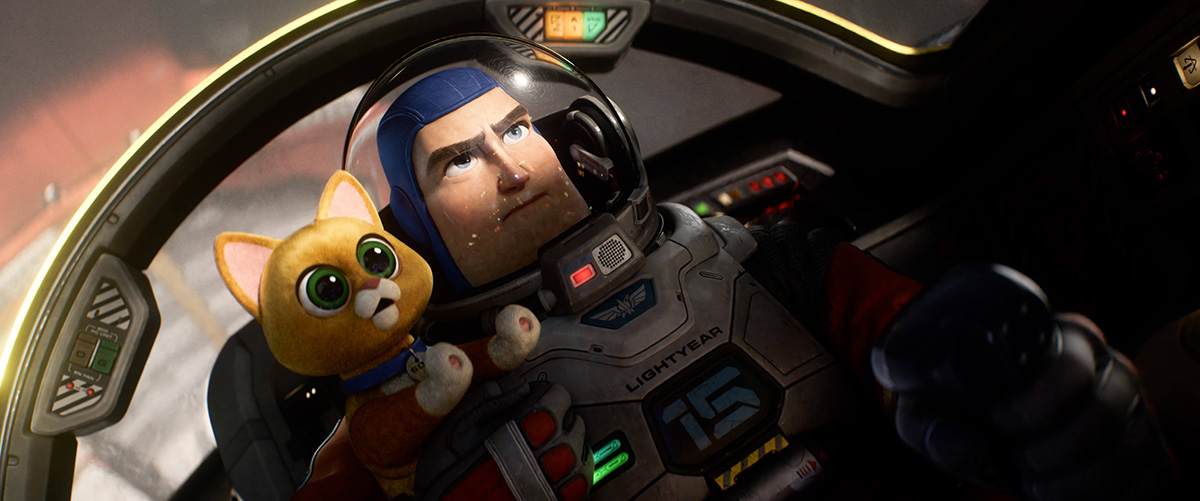
HULLFISH: What was the schedule like for this film for you?
GREENBERG: I started in May of 2018, so I spent the better part of 2018 through mid-2020 working on several versions of the story and recording, scratch dialogue, and working with our story artists. We did about seven brain trusts. We started getting casting for production talent. It was always a bit of a challenge trying to make this movie because we had a lot of obstacles that other movies might not have. One of them was we're trying to make a movie reinventing a character that everyone already knows and loves in one format for the better part of the 25 years. So many people are going to have a preconceived idea of what a movie that inspired the action figure that they grew up with is. It was a lot of work trying to figure out how to thread that needle. We set out to make an epic sci-fi film in the Pixar canon which there aren't really many. We definitely don't focus on genre films, but it's something that we wanted to intentionally do. However, Disney and a lot of people at Pixar were concerned that we might be making a movie that's too scary or has too much action for what our audience expects. So we really had a lot of little needles to thread to try and work that out. It did take several iterations to really get it right. I think.
HULLFISH: You mentioned the phrase “brain trust.” Can you elaborate on what that is?
GREENBERG: At Pixar, we do these screenings with an established brain trust of people that consists of all our current directors. A lot of times it's hand-selected by each show with who they would like to have, but it's all creative leadership. There's no executive interaction there or anything like that. This brain trust gets to have the meeting about what we should do, what affected them, what worked, and what didn't work. It’s a way for them to say, “This is what I would do if I was you. Let's see what happens,” and we go from there.
Each brain trust screening is in a 12 to 18-week cycle, which is a hustle if you think about it. You are making 85 to 95 minutes of content that's all storyboards. Any given sequence is going to have somewhere between two hundred and a thousand boards sometimes. There are a lot of drawings. Back when we didn't have computer-generated storyboards, we had a lot fewer storyboards, but now you have the ability to iterate very quickly.
HULLFISH: For those that might be thinking that the storyboards are one or two per shot, that’s not how this is. This might be 6, 7, 8, or more storyboards for a single shot.
GREENBERG: Oh yeah, way more. Our head of story is a dear friend of mine, Dean Kelly. He's one of the most prolific story artists out there. He’s won the Annie Award like four years in a row for best storyboard artist. He's next level, but it's a lot. It's a lot of boards and it's a lot to cut. With the action scenes, it helped visualize them so much better to have something that is more robust like that.
There's a big contingency of Pixar, and I'm not disagreeing with it, that we should keep things rough and have fewer boards and keep it loose so we can change things quickly and not be precious with it. That's definitely a way to make movies which is great. You get someone like Dean Kelly, and you get someone like Angus MacLane, who has been an animator for 15 years at Pixar and also directed for an additional 9 or 10 years. He's got a laser focus on what they're going for in some of these action scenes. That's part of how I even got the gig on Lightyear. I worked on The Incredibles as a second editor. We did a lot of action scenes. Dean Kelly and I got to show Angus some of the storyboard sequences that we did before Brad (Bird) even had a chance to see it.
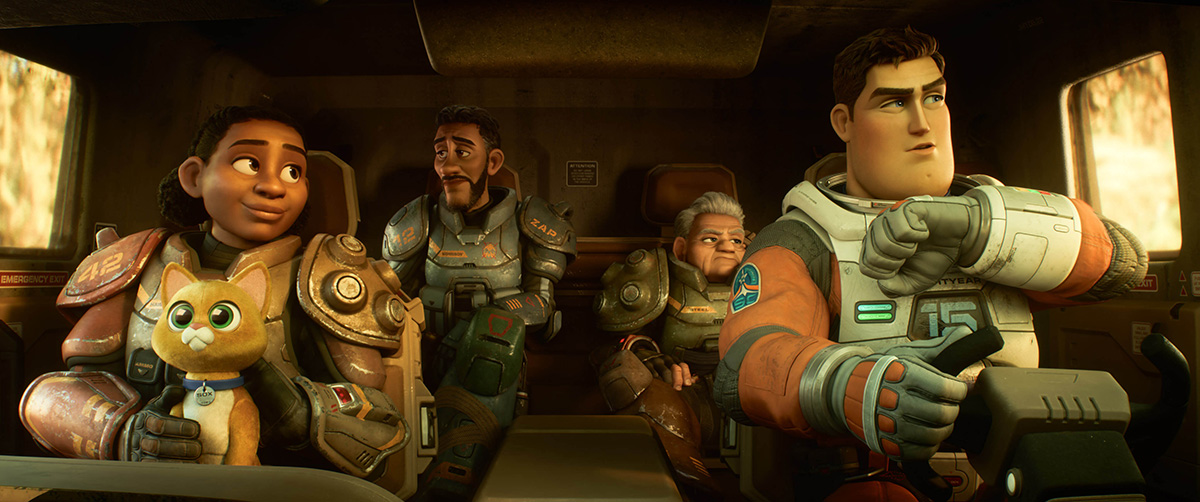
HULLFISH: One of the interesting things is a guy your age and your number of years in the industry if doing live-action might have 20 movies under his belt, but animation, as you pointed out, takes four or more years to knock one out. You have 5 Pixar films in a 20-year career, so that speaks to the amount of time it takes to get these movies done.
GREENBERG: Yeah. After the first film I did, which was The Incredibles, I remember looking at IMDB and just thinking, “Wow, people probably thought I'd died or fell out of the industry.” Because all of a sudden I trailed off and there was nothing for years. My resume is quite a bit smaller than when I was in visual effects, working on multiple projects at once, and the cycle was around 18 months.
HULLFISH: Tell us a little bit about getting started and a bit about that path from VFX to animation editorial.
GREENBERG: Yeah, I definitely took the scenic route to get to where I am. I originally wanted to get into sound design for film. That was really what was motivating me when I was an outsider looking in. I grew up in Denver, Colorado. I was so far away from the movie industry as it were. It just didn't even seem like it was attainable, but I was really obsessed with playing music in high school. I was in a band. I spent hours and hours in my basement with my Tascam 4-track cassette player, Alesis Hr-16 drum machine, keyboards, and guitars, and I really fell in love with the idea of linear recording.
That's my intro to getting into editing. I tried very hard in the lovely music industry for several years and ended up in Seattle in 1996, where I was living in an apartment with four guys struggling to find another band to plan in and to find good work. I just started asking myself, “What do you really want to do? Let's just figure this out.” I remembered being in my basement and loving working with all the gear and I thought, “Maybe there's a way to get into the industry by going into post-production or into sound design.”
So I got onto a Greyhound and came down to San Francisco, looked at the Academy of Art, and I never really looked back. I moved down to San Francisco. I got any job I could to pay for this school and just started going. That's what got my foot in the door. I just hustled from there working at any random place I could. Once I got onto my video editing job cutting with an RM-450, where you just hook up two tape decks and see what you can do, I fell in love with it.
I fell in love with the magic of image and sound, being able to manipulate both at the same time, and seeing what you get. I think it was because they were so slammed working on Star Wars Episode I at ILM, and I don't think I was their top choice by any means, but they called me out of the blue on a Friday evening and said, “Hey, can you show up Monday?” I was like, “You got it, I'll be there.” I spent about four years at ILM. I loved it up there. I loved the people and the projects.
I didn't really like my role. It felt more curative or more like a librarian of shots. I really wanted to be more involved in the creation of a film. When I saw that there was an opening for a second assistant editor at Pixar, I jumped at the chance. A lot of my coworkers at ILM were like, “You wanna go work on cartoons?” and I was like “It's closer to the story.”
It's the best move I ever made. Pixar’s an amazing place. It allows me to get the best of both worlds. I get to work with sound effects, music, dialogue, and picture. I get to control all of it until we hand it off to our sound designer or composer. Then they use those guide tracks that we spend all this time making. It's the most rewarding job in that way. Some people only like to cut picture and dialogue and leave the sound effects/ music to other people, but I like to do it all.
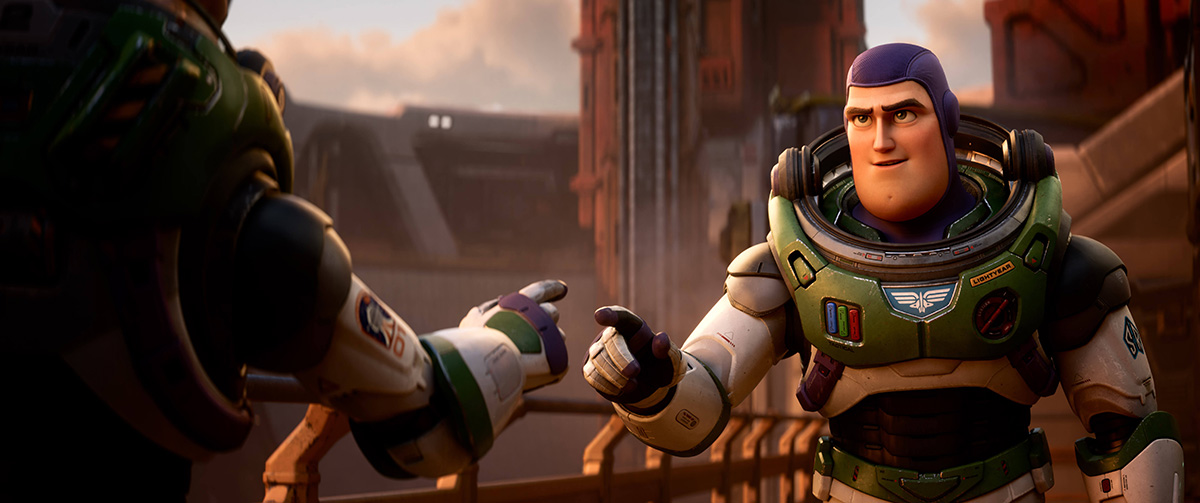
HULLFISH: Let's talk about the famed Pixar storytelling ethos. What are some of the things that you've learned about storytelling over the last 20 years?
GREENBERG: Yes, so much, especially with visual storytelling. We spend so much time working in storyboards. There are a lot of nuances about the story that are not there yet. So you have to be super clear about what you're going for. That's why a lot of animated features end up having way too much dialogue which is always a problem for me. There are a lot of animated features I can barely stand to watch because it’s everyone just saying their motivation all the time. It's because they’re not able to get those nuances of action and to show what the character is trying to do as opposed to the character telling you what they're trying to do. I learned that in animation you need to find those opportunities because they don't present themselves as easily as watching an actor try and do something. All the talking that goes into directing an actor like that is so valuable to an editor. We get it in scratch a little bit, but a lot of this is we just have to make it.
I've learned a lot of things about comic pacing. I've gotten to work with all these great people. On this show, Andrew Stan was the executive producer. He was involved a lot. When you're this close to a project for so long — a lot of the small problems seem huge — you start to question whether the movie's even all that good. There are so many logic questions that you have to answer. You have to be able to separate that out and realize that “No one's gonna care about that.” Then you get to the preview and you really see what's important. You see what's working, what the audience cares about, and what they don't care about.
HULLFISH: How long ago did you have your first true audience screening?
GREENBERG: Our first audience preview for the general public was October 2021. We had two screenings. Both the theaters were pretty packed, and it was terrifying, but it was amazing to get to show this film to an audience that was just ready for it. They wanted it and they were so appreciative. The second they heard it was a movie about the Buzz Lightyear that inspired the toy, they were so ready to watch it. It was a wonderful experience. It was such a payoff after toiling away over all these months of work at first in the studio, and then suddenly in our bedrooms. It was really a cathartic beautiful experience.
HULLFISH: There's the old saying in live-action filmmaking that says, “There's the film you write, the film you shoot, and the film you edit, and they're all different.” Does that apply to animation?
GREENBERG: I think it applies even more because I really think the original script that shows up for our first screening cycle is just a starting point. It's just to get something in the Avid and see what we can do from there. Really it's anything goes by the time it gets to my department. I can manipulate it as much as I want.
Obviously, we have to use the script as a guide, but there are lots of ways we can take the film shot-wise. My colleague always says that the story process is a really elaborate version of Final Draft, where we are working on it for years, and then when we get to the layout, that's when we actually make the movie. It was an incredible experience to get to work with Jeremy Lasky, who was the director of photography on this film. If you look him up, he's got a pretty long list of stuff that he's been the DP for at Pixar.
He's one of those guys. You just check your ego at the door and let's make this movie. Let's figure out the best way to do it. Everything was a conversation. There were no arguments. It was just me and Angus and Jeremy for a lot of sequences trying to figure out how to make this work now that we're in shots and not in storyboards and the only thing we have is the audio tracks. That's really when you make the movie.
That's the second part. It's where you shoot it. It’s also where you edit it in a way because we're doing it on the fly and we have the luxury to ask the layout artists or the DP if we can get another shot here or a different angle there. We have the ability to manipulate the set or the blocking to fit our needs or to make something read easier or make it more comedic. That is a fascinating process.
HULLFISH: How did the story evolve on Lightyear? Can you share if there were any major changes from the script to the final movie?
GREENBERG: That's a great question. Without spoiling anything, I can say in a general way we did have a lot of changes throughout the seven different brain trusts.
HULLFISH: Many editors that I speak to talk about the need to trust the process of editing. Your first cut is not going to be the same as your last cut. Can you talk to me about the need for patience and the need to trust the amount of time that you still have left on a film to get it right?
GREENBERG: Absolutely, and I would love to hear about what the term “trust the process” means in live-action because I've been in animation for so long. It’s a Pixar saying as well to trust the process. For Pixar, that process is this brain trust that I was talking about. You screen it, get your notes, rewrite it, and hit it again. It's just in the iterations. That's where you're going to find your gold and that's where you're going to discover what's important and what's not important. Everyone at the first screening thinks, “Oh, it's amazing, this is going to be a great film. I love the ideas and everything is fresh and new." By the time you get to the fourth brain trust cycle, you got some problems you really need to deal with this. You were supposed to deal with them by the last screening but couldn't work it out.
You get in the woods a little bit. Then you make your way around by the seventh brain trust. It's always a really challenging struggle the whole time. You surround yourself with this many smart and creative people and do so many iterations. Eventually, you're going to get a version of the movie that is really firing on all cylinders — and that's what the process is to me.
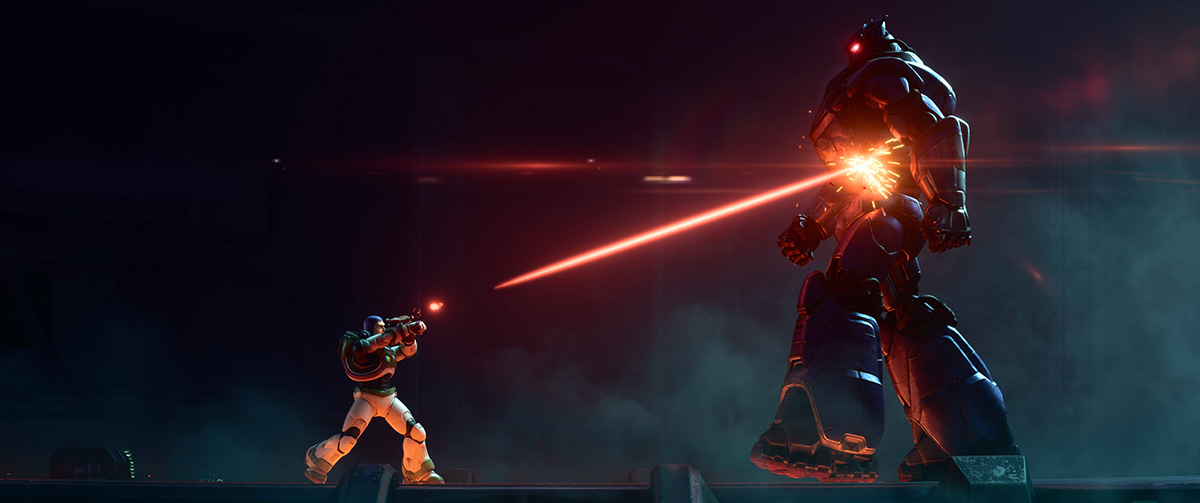
HULLFISH: I think younger editors have this sense that the first cut is amazing and they are going to be done, but of course, they have a long road ahead of them. On a feature film, you should have the editor's cut done a week or two after principal photography is over, and you might have another year of work on that film once the first cut is done. So there's definitely a process that has to take place.
GREENBERG: Even after all the pitches and all the guidance through our story process or in live-action principal photography, there are still nuances in there about intent that the editor might not completely understand what the director wants. Or maybe the director will have a different idea once they've seen the cut, so it is just like this process because it's a way of building something and then experiencing it, reacting to it, and then changing it.
That's really what we're constantly doing. We are like a chef composing a dish and then tasting it, eating it, and then going back to scratch to figure out what else we can do.
HULLFISH: I've heard of a couple of editors who have moved from live-action to animation, which seems like a very difficult jump to me. Could you talk about the idea of someone trying to move from live-action to animation, and what would surprise them?
GREENBERG: There are editors that move from live-action and animation. Even at Pixar, Nick Smith, who cut Bram Stoker's Dracula and a bunch of other movies, has been at Pixar for quite a while now. He just cut Turning Red. Kevin Nolting, he’s Pete Doctor's editor now. He came from live-action down in LA from such films as Over the Top (that arm wrestling movie starring Stallone). It’s interesting because I still feel like when it comes to The Academy or other groups like that, we're still kind of at the kid's table. We don't necessarily get the admiration for the creative input that you might get if you worked on an Oscar-nominated drama or live-action film so that motivation is tough.
I think the biggest contrast is that we do spend all these years working in storyboards and cutting storyboards which is such a different approach than cutting live-action, especially with dialogue, because we have to create all the acting. We have these storyboards. We can time each movement that the character might do. We’re in there loosely editing, loosely animating from storyboards. You have to be able to visualize the scene as it exists in storyboards because you could cut the boards and make it work really well, but it might not play once you get it into the 3d shot environment.
There's a lot of stuff that happens where the story artist is done with their flipbook, which they call their storyboard sequence, and they pitch it to the director before it gets editorial. It might be a case that it’s really funny the way they're pitching it, but by the time it gets to editorial, we're sitting here with the raw materials trying to make it work, and it's just not as funny. Kevin Milton's least favorite phrase is, “It was funnier in the pitch” which is what happens. So it's that kind of thing where we're working with so many different people, so many different story artists, so many different layout artists on these projects that are scaled up. The scale of these shows is monstrous. It takes years and years to make and to try and have that memory of — Oh, I think I remember we recorded a line like back in 2019 where Chris Evans said it like this, and it's really funny — let me go find it. It's a different process and it’s extended out. You're working very rough for a very long time.
HULLFISH: Also, I think one of the differences is that you can ask for stuff that a live-action editor can’t. A live-action editor has what they have, and aside from some reshoots, they have to operate within those parameters. You can ask for different angles or shots, correct?
GREENBERG: Absolutely, in the story phase but even in the lab phase, the sets are built, so we do have those parameters to work in. But I feel like I'm most creative when I have limitations as an editor. I would hate to operate in a way where the sky's the limit, and I can do whatever. I wouldn't know what to do. I thrive on the limitations of what we have, and I'm sure in live-action, that would just be so fascinating, to make what you can out of whatever you have. In animation, we're doing that to a degree, obviously, but when we do get to the layout part, we are able to ask for things. It's really helped. I can give you one example.
There are some moments where we're supposed to convey a level of exposure to being in space and how scary it is that it's just the infinite blackness. Our first layout artist did a bunch of shots where you see a lot of the ship. It's taking up a lot of the frame, so you're not seeing as much empty space. It made you wonder why the actors are acting so scared about it because you don't have that exposure.
So I would ask the layout artist if they could try and focus on that exposure. Take the ship and move it to the very top of the screen. So there's a bunch of negative space at the bottom. Just little things like that to convey that sense of exposure. It’s like in the movie Gravity, which was very effective at showing a character surrounded by this infinite void. That was kind of what we were going for. So to be able to talk those things through, we didn't have to go back to space…or something. [laughs]
HULLFISH: That's probably a good thing.
GREENBERG: Yeah. Yeah.
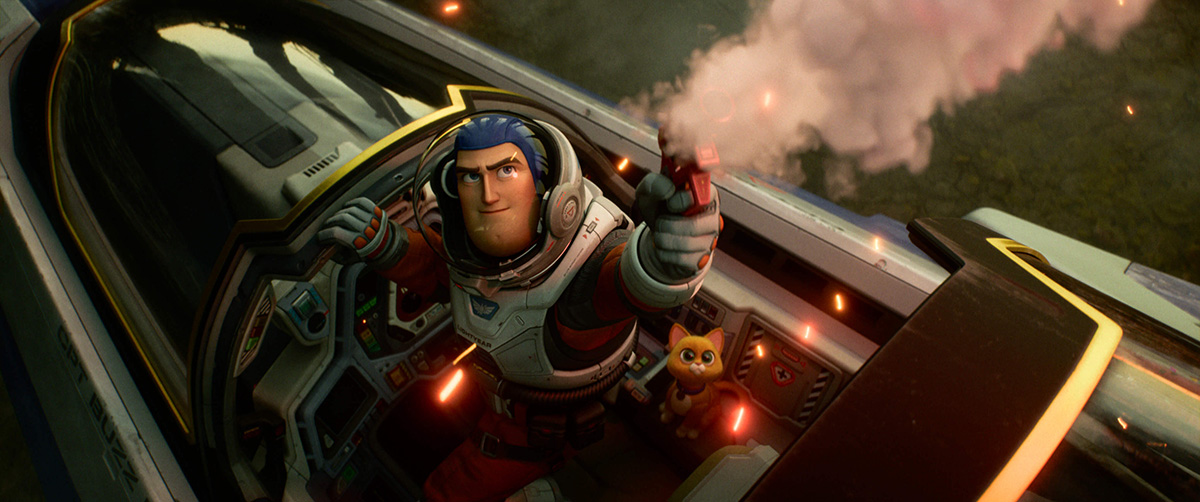
HULLFISH: Were there any films or muses that you used as you were working on this?
GREENBERG: Oh my gosh, yes. Like I said earlier, we set out to make a genre film. Angus MacLane is a bonafide sci-fi nerd. Angus MacLane is a bonafide sci-fi nerd. He is an encyclopedia of all movies, not just sci-fi. It’s certainly incredible to witness. It's not intimidating at all, especially given the fact that I'm the kind of person that can barely remember who cut what last year. That’s not how my brain works. We are both children of the seventies and eighties and huge sci-fi nerds. You can find references in every sequence of this movie to something from back then whether it's Star Wars, Close Encounters, Terminator, or RoboCop. It’s across the board.
Angus thrives on that encyclopedic knowledge when he's describing scenes, even to story artists, he's referencing movies and TV shows. Sometimes even stuff that people would not even know, he would be like, “Buck Rogers, the first episode of season two, there was something in there.” And everyone's like, “Okay, I'll go look that up on YouTube.” That's the level of detail that is knocking around in Angus's head at any given time. So yes, you will see that all over the place, and I don't really look at it as being derivative. I think it's more of “Come on, we're making a fun sci-fi epic movie. Let's lean into those homages.”
We also have the added element where we are making a Buzz Lightyear movie, so we have to draw on the Toy Story movies. We're constantly trying to figure out the ways in which to tell the audience you are watching a Buzz Lightyear movie. The first way we did that was we scoured all the other Toy Story movies, especially the first three, and came up with a lexicon of all the memorable lines that Buzz might say. We figured we needed to get these lines in here one way or another in one shape or another. It was really fun to figure out how those are going to play in this real movie.
HULLFISH: You and the director came up through the Pixar ranks together along two different paths, him as an animator moving up through the creative ranks and you through editorial. What kind of relationship did you two have before this movie?
GREENBERG: We had a good relationship. We were on the first Incredibles together, but I was an assistant editor and he was a starting animator. So we didn't really have much interaction. But after we worked on WALL·E, we realized that the very first sequence I got to cut was the very first sequence that Angus got to board completely beyond storyboards. It was a scene in WALL·E that never made it to screen, thank God. [laughs] It was a bunch of robots dancing to the music of Hello, Dolly!, but they were making the music out of the sound effects of the way they were clanking. It was like, “Good luck with that one.” Now I know why they gave it to me to cut because no one else wanted to.
HULLFISH: Oh, my gosh, that’s great. [laughs]
GREENBERG: Yeah, he was always pitching ideas. I helped him cut a short that I didn't make it into development. We knew each other, but we weren't really hanging out in the atrium, having lunch, or anything like that. When he was looking for an editor for Lightyear, he knew he was setting out to make a movie that is going to have high levels of action, high levels of comedy, and then high levels of drama. I think it was my experience on The Incredibles 1 and 2, on WALL·E, and on these other films that helped get me this gig.
HULLFISH: To bring up this idea of the cycle and how long it takes to work on one of these films, you mentioned Axel Geddes. He is someone who might have edited this movie but wasn’t available since he was spending the last 3 or 4 years on Toy Story 4.
GREENBERG: Absolutely right, and


